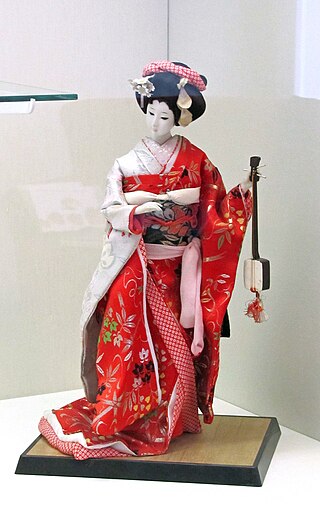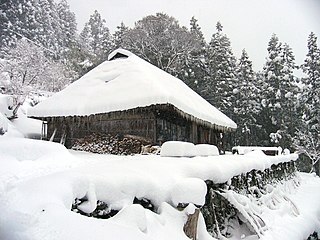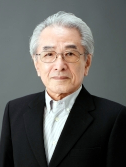This article has multiple issues. Please help improve it or discuss these issues on the talk page . (Learn how and when to remove these template messages)
|
Alex Kerr (born June 16, 1952) is an American writer and Japanologist.
This article has multiple issues. Please help improve it or discuss these issues on the talk page . (Learn how and when to remove these template messages)
|
Alex Kerr (born June 16, 1952) is an American writer and Japanologist.
Originally from the Bethesda area in Montgomery County, Maryland, Kerr's father, a naval officer, was posted in Yokohama from 1964 to 1966. Kerr returned to the states and studied Japanese Studies at Yale University. After studying Chinese Studies at the University of Oxford as a Rhodes Scholar, Kerr moved back to Japan full-time in 1977. He lived in Kameoka, near Kyoto, working with the Oomoto Foundation, a Shintō organisation devoted to the practise and teaching of traditional Japanese arts.
An expert on Japanese culture and art, he frequently writes and lectures in Japanese. Through his experiences in Japan, as related in his books, he has become an avid art collector and patron of Japan's traditional theatre and other arts. He also worked in business, working for Trammell Crow in the 1980s. Kerr currently has several residences. He lives in Bangkok, Thailand for half of the year, and Kyoto for the other half, visiting and staying at Chiiori as well.
In the early 1970s, Kerr purchased a crumbling, abandoned, two-hundred-year-old Japanese house in the Iya Valley, a remote mountainous area of Tokushima prefecture on the island of Shikoku. He restored the house to a liveable state, including re-thatching the kayabuki roof using traditional materials. The house was given the name Chiiori, or "House of the Flute". The restoration of Chiiori began a project by Kerr and others to preserve Japan's vanishing arts, culture and traditional lifestyle.
In 2007, Kerr decided to become more personally involved in Iya. He expanded and reorganized the board of directors of the project, and closed the house for a few months for renovations. It reopened in November 2007.
In his book Lost Japan (1993), he describes what he saw as the sorry modern state of the country in which he has spent more than 35 years of his life. It was originally written and published in Japanese as Utsukushiki Nihon no Zanzō (美しき日本の残像, Last Glimpse of Beautiful Japan). He was the first foreigner to be awarded the Shincho Gakugei Literature Prize for the best work of non-fiction published in Japan in 1994 for this work. His later work Dogs and Demons (2002) addressed the same issues of degradation and loss of native culture in the wake of Modernization/Westernization. [1] In Another Kyoto (2016), Kerr and co-author Kathy Arlyn Sokol draw on decades of living in Kyoto and reflect on the architecture of the city’s famous monuments.

Japanese art consists of a wide range of art styles and media that includes ancient pottery, sculpture, ink painting and calligraphy on silk and paper, ukiyo-e paintings and woodblock prints, ceramics, origami, bonsai, and more recently manga and anime. It has a long history, ranging from the beginnings of human habitation in Japan, sometime in the 10th millennium BCE, to the present day.

Japanese architecture has been typified by wooden structures, elevated slightly off the ground, with tiled or thatched roofs. Sliding doors (fusuma) and other traditional partitions were used in place of walls, allowing the internal configuration of a space to be customized for different occasions. People usually sat on cushions or otherwise on the floor, traditionally; chairs and high tables were not widely used until the 20th century. Since the 19th century, however, Japan has incorporated much of Western, modern, and post-modern architecture into construction and design, and is today a leader in cutting-edge architectural design and technology.

Japanese dolls are one of the traditional Japanese crafts.

An oni is a kind of yōkai, demon, orc, ogre, or troll in Japanese folklore. They are believed to live in caves or deep in the mountains. Oni are known for their superhuman strength and have been associated with powers like thunder and lightning, along with their evil nature manifesting in their propensity for murder and cannibalism. They are typically portrayed as hulking figures with one or more horns growing out of their heads, massive teeth, and occasionally a third eye in the center of the forehead. They are typically depicted with red, blue, black, or yellow colored skin, wearing loincloths of tiger pelt, and carrying iron kanabō clubs. They also have three to six digits on each hand and foot tipped with claw-like nails. Oni are able to change their looks to fool their victims into trusting them. Oni can be male or female, but have been predominantly male throughout history. Female oni are sometimes referred to by the name Yamauba. When in disguise, oni are capable of appearing as a man or woman, regardless of their gender. As monstrous as oni are, they have been linked to bringing good fortune and wealth.

Kyōgen is a form of traditional Japanese comic theater. It developed alongside Noh, was performed along with Noh as an intermission of sorts between Noh acts on the same stage, and retains close links to Noh in the modern day; therefore, it is sometimes designated Noh-kyōgen. Its contents are nevertheless not at all similar to the formal, symbolic, and solemn Noh theater; kyōgen is a comic form, and its primary goal is to make its audience laugh.

Machiya are traditional wooden townhouses found throughout Japan and typified in the historical capital of Kyoto. Machiya ('townhouses') and nōka constitute the two categories of Japanese vernacular architecture known as minka.

Tosa Mitsuoki was a Japanese painter.

The Agency for Cultural Affairs is a special body of the Japanese Ministry of Education, Culture, Sports, Science and Technology (MEXT). It was set up in 1968 to promote Japanese arts and culture.

Chiiori is the name of an Edo period minka farmhouse in the Iya Valley, western Tokushima, Japan. Dating from around 1720, the house is believed to be the second oldest in Iya.

Manggha is a museum in Kraków, Poland. Until 2005, it was a branch of the National Museum of Kraków.

The Iya Valley region in Tokushima Prefecture, Japan is a scenic area known for its mountain valleys, thatched roof farmhouses and historic Vine Bridges. Although access has improved in recent years, the Iya Valley and the inner parts of Shikoku have historically been remote and difficult to enter. Members of the Taira clan were said to have entered the area after losing the Genpei War to the Minamoto clan in the late 12th century.

Takeuchi Seihō was a Japanese painter of the Nihonga genre, active from the Meiji through the early Shōwa period. One of the founders of nihonga, his works spanned half a century and he was regarded as master of the prewar Kyoto circle of painters. His real name was Takeuchi Tsunekichi.

Kyoto City University of Arts is a public, municipal university of general art and music in Kyoto, Japan. Established in 1880, it is Japan's oldest university of the arts. Among its faculty and graduates have been 16 recipients of the Order of Culture, 24 members of the Japan Art Academy, and 10 artists who have been designated Living National Treasures. It has been associated especially closely with nihonga painters from western Japan.
Mirei Shigemori, was a Japanese landscape architect and historian of Japanese gardens.

Geisha (芸者), also known as geiko (芸子) or geigi (芸妓), are female Japanese performing artists and entertainers trained in traditional Japanese performing arts styles, such as dance, music and singing, as well as being proficient conversationalists and hosts. Their distinct appearance is characterised by long, trailing kimono, traditional hairstyles and oshiroi make-up. Geisha entertain at parties known as ozashiki, often for the entertainment of wealthy clientele, as well as performing on stage and at festivals.

The Kyoto Art Center is a venue for promoting the arts which is located in the heart of Kyoto, Japan. The center, a three-story reinforced-concrete building, occupies the site of the former Meirin Elementary School . It has a studio, gallery, auditorium, Japanese-style hall, free space, library, an information corner, Japanese-style tea room, the Maeda Coffee Meirin coffee shop, a common room and shops. Kyoto Arts and Culture Foundation manages the center, which aims to support artistic activities, act as a clearinghouse for arts information, plan artist in residence programs and promote artists to the public. In 2008 the north, south and west wings, the gate and wall of the center were registered as one of the Tangible Cultural Properties of Japan.
Lost Japan is a 1993 book written by American Japonologist Alex Kerr.
Sueharu Fukami is a Japanese ceramic artist and sculptor known for his work in pale-blue qinbai porcelain. Fukami's abstracted, sculptural ceramic works depart from the traditional Japanese artisan traditions of his upbringing and instead explore natural phenomena and universal senses like "infinite space" through sharp silhouettes, sweeping curves, architecturally-inspired arches, and delicately-colored glaze. His minimalist approach to porcelains has contributed to defining and expanding the meaning, importance, and popularity of contemporary Japanese ceramics beyond craft art circles, most notably to fine art collectors and museums globally.

Yoshiko Iwamoto Wada is a Japanese textile artist, curator, art historian, scholar, professor, and author. She has received international recognition for her scholarship and expertise in the field of textile art. In 2010, she was named a "Distinguished Craft Educator - Master of Medium" by the James Renwick Alliance of the Smithsonian Institution, who stated: "she is single-handedly responsible for introducing the art of Japanese shibori to this country". In 2016 she received the George Hewitt Myers Award for Lifetime Achievement.

Kunihiko Moriguchi is a Japanese textile artist who specializes in the yūzen dyeing technique. He is a Living National Treasure of Japan.